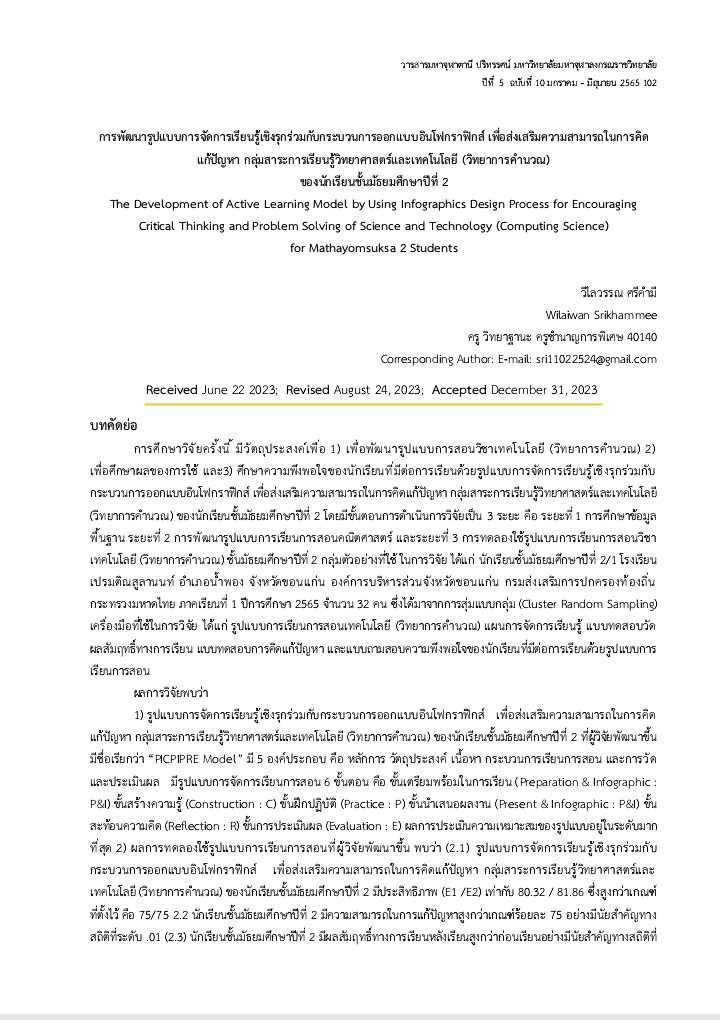The Development of Active Learning Model by Using Infographics Design Process for Encouraging Critical Thinking and Problem Solving of Science and Technology (Computing Science) for Mathayomsuksa 2 Students
Main Article Content
Abstract
The current research aims to achieve three objectives: 1) developing a teaching model for the subject of Computing Science, 2) studying the effects of its application, and 3) examining the satisfaction level of Mathayomsuksa 2 students towards a collaborative learning approach combined with the infographic design process, which enhances problem-solving abilities in the field of Science and Technology (Computing Science). The research was conducted in three phases: Phase 1 involved basic data collection, Phase 2 encompassed the development of the mathematics teaching model, and Phase 3 implemented the teaching model in a Mathayomsuksa 2 Students Computing Science class. The sample group consisted of 32 students from class 2/1 at Premotinsulanonda School, Namphoung District, Khon Kaen Province, selected using Cluster Random Sampling. Research Instruments included the Computational Technology teaching model, a learning management plan, tests to measure learning efficiency, problem-solving tests, and a satisfaction survey regarding the teaching approach.
Results revealed: 1) The collaborative learning approach combined with the infographic design process, aimed at promoting problem-solving abilities in the Science and Technology (Computing Science) domain, was termed the "PICPIPRE Model." This model comprised five components: principles, objectives, content, teaching processes, and assessment. The teaching process had six steps: Preparation & Infographic (P&I), Construction (C), Practice (P), Present & Infographic (P&I), Reflection (R), and Evaluation (E). The suitability of the model was highly rated. 2) Regarding the experiment's implementation: 2.1) The collaborative learning approach with the infographic design process showed significant effectiveness (E1/E2) at 80.32/81.86, surpassing the set benchmark of 75. 2.2) The students' problem-solving abilities exceeded the 75% benchmark with statistical significance at the .01 level. 2.3) Post-learning, students showed significantly better learning efficiency scores than pre-learning at the .01 level. 2.4) The effectiveness index of the collaborative learning approach combined with the infographic design process had a value of 0.7198, indicating a 71.98% increase in student knowledge. 3) Overall, students expressed high satisfaction towards the collaborative learning approach combined with the infographic design process for enhancing problem-solving abilities in the Science and Technology (Computing Science) domain.
Keywords: 1) Active learning, 2) Infographics, 3) Problem-solving abilities, 4)
Science and Technology (Computing Science) Subject areas
Article Details

This work is licensed under a Creative Commons Attribution-NonCommercial-NoDerivatives 4.0 International License.


